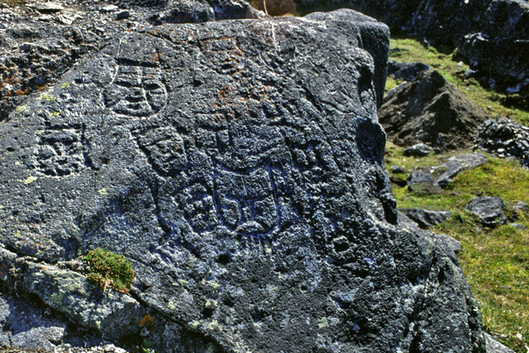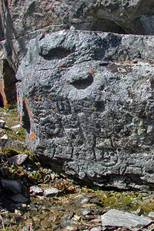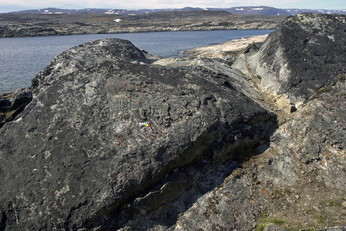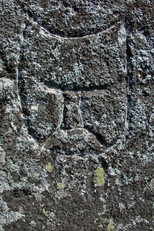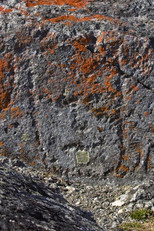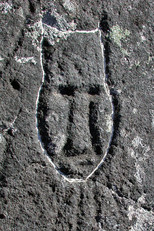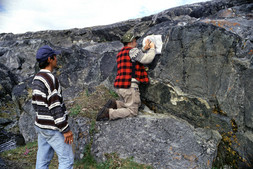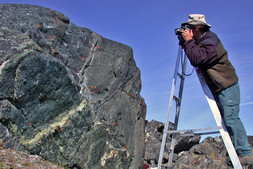- About
- Discovering Archaeology
- Projects and Activities
- Online Resources
- References
Archaeology
Protection and development of the Qajartalik petroglyph site (JhEv-1)
Since 1996Since 1996, the Avataq Cultural Institute has been actively participating in studying and developing the Qajartalik petroglyph site, as well a creating a plan to protect the site for the long term.
Site description
Site JhEv-1’s petroglyphs are located in the far northeast corner of Qikertaaluk Island, on a small peninsula called Qajartalik (meaning “where there is a kayak” in Inuktitut). Qikertaaluk Island is roughly 40 km southeast of the community of Kangirsujuaq.
The site is trough-shaped, measuring approximately 130 metres in length. Outcrops of steatite are found across the site’s southeast axis. These outcrops were used for two primary purposes: the creation of petroglyphs and the extraction of the steatite blocks needed for making lamps and containers.
Site JhEv-1 has not been scientifically dated. Nonetheless, there is a strong stylistic resemblance to Dorset Era handicrafts. Further archaeological clues from the site’s steatite-mining evidence also indicate Dorset Era exploitation.
The petroglyphs
The Qajartalik petroglyphs are unique manifestations of Dorset Era artistic expression. Qajartalik appears to be the only place where Dorset Era peoples transposed onto soapstone, and on an enormous scale, the distinctive figures usually found on much smaller artifacts made of bone, ivory or horn.
In the early 1960s, Bernard Saladin d’Anglure documented 95 carvings at Qajartalik (Saladin d’Anglure 1962). During his later expeditions (from 1996 to 1998) with Avataq, we were able to identify an additional 70 petroglyphs, bringing the site’s total to 165. Some of Qajartalik’s petroglyphs are only visible in adequate light, and while most of them portray anthropomorphic features, they are not overt representations of human figures.
Site preservation
For the last decade, the Avataq Cultural Institute has been working with the federal government to have Qajartalik recognized as a world heritage site. Both unique and fragile, this monumental site requires protection. It is therefore important that legislation be passed in order to stop further vandalism and other activity detrimental to its preservation. A 2008 agreement between the Inuit of Nunavik, Nunavut, and the Federal Government concerning Nunavik’s coastal islands has allowed us to resubmit the Qajartalik site’s dossier to the Historic Sites and Monuments Board of Canada. Official recognition is anticipated in early 2010.
See the Qajartalik Petroglyphs Collection

